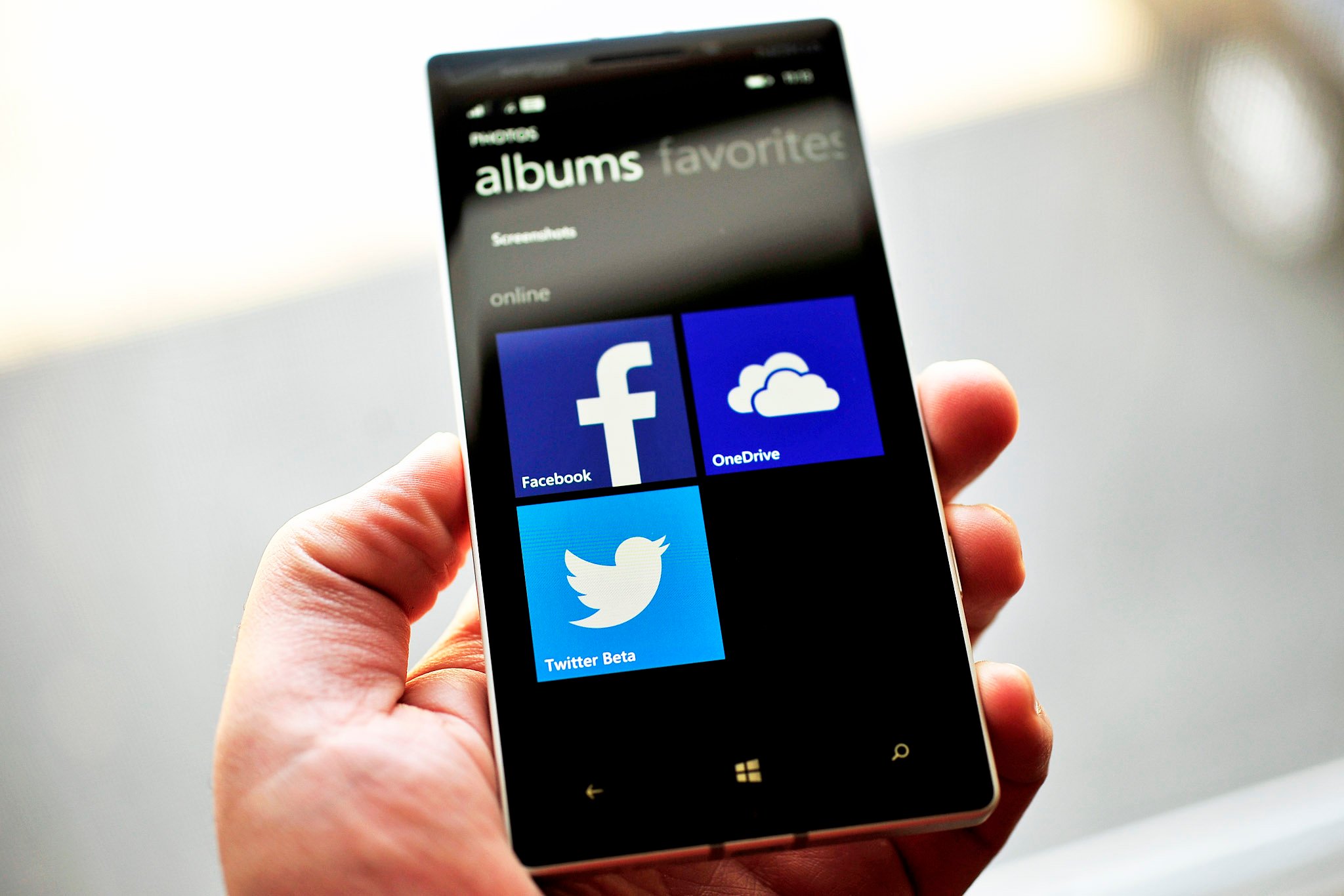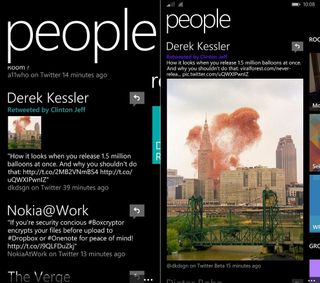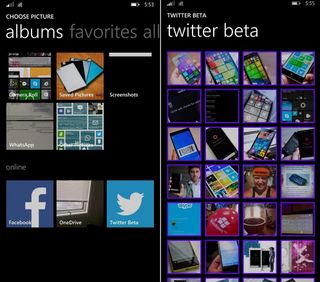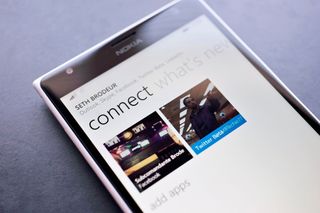Sharing is caring – How the Social Extensibility framework for Windows Phone 8.1 will make things better

Windows Phone 8.1 has a lot going on under the hood, from unified app stores with Windows 8.1 to new tools for developers. One of those tools is dubbed the ‘Social Extensibility Framework’ and while an odd term, it will have vast consequences for Windows Phone users going forward.
In case you’re wondering, this is the ‘What happened to Facebook in Windows Phone 8.1?’ discussion. While some of you have lamented the changes, no doubt due in part to habit, in the long run this improved architecture alteration will give companies a more consistent and unified approach to Windows Phone.
What is the Social Extensibility framework?
The Social Extensibility framework, or what I’ll refer to just as SEF going forward, is a new set of “exposed…social extension APIs” from Microsoft. It’s a gift to developers, and it will allow apps to hook into the OS directly.
Previously, Windows Phone had some privileged services like Twitter, LinkedIn, Skype and Facebook, which were allowed to connect deeply into the OS. Users could post once across networks, see updates in their Me Tile and have an integrated experience like no other mobile OS. Indeed, Microsoft rightly bragged about this function as having Twitter and Facebook profile information ‘linked’ to your contacts directly was new.
The problem was that those networks changed, and they changed often.
As a result, things would break, services wouldn’t connect, and new features weren’t adopted in a timely manner. Microsoft would have to update the entire OS to add or fix those services, and in the mobile game, that’s just not time Microsoft had to spare (and when something broke the outrage from users was evident).The SEF is Microsoft’s answer as it’s a set of tools that will allow companies like Twitter, Facebook, LinkedIn and more to tie into the OS. What’s more, it will be open to other social network companies, ensuring there are no longer privileged apps on the system. Facebook’s integration will look like Twitter’s, etc. That means the user-experience should also be consistent.

Old versus New People Hub in 8.1
Get the Windows Central Newsletter
All the latest news, reviews, and guides for Windows and Xbox diehards.
What SEF can do
Last week, the beta build of the new Twitter app for Windows Phone 8.1 was leaked. We predicted at the time that the app would be pulled, and sure enough hours later it was. But the real news was seeing just how deep the app could plug into the OS.
Here are a few features that the SEF can do:
- Sign in once, signs in everywhere
- Richer People Hub experience
- ‘Connect’ feature in a contact’s listing
- Photos Hub integration
- New Share experience

Let’s look at those individually to explain better what they mean to you in your everyday usage.
- Sign in once – On Windows Phone 8, you could sign in under Settings > email + accounts and link your account to the OS for Twitter and Facebook. You also could then install an app because the experience wasn’t complete. That was confusing and odd. Now, when you sign into the app, it will plug into the OS directly. Sure, Facebook is still there under email + accounts, but tapping it only sends you off to the official app.
- People Hub/What’s New – Twitter images that are embedded in the What’s New stream are now more than just thumbnails; instead, they are full sized photos. Tapping someone’s tweet will take you directly to that message in the official Twitter app. From there, you can get the full suite of Twitter tools instead of just ‘post’ or ‘reTweet’. Likewise, tapping someone’s Facebook post will open the app, giving you a non-crippled experience since you have access to Like, comments and more directly.
- Connect – Connect is new in 8.1, and it is found under a contact’s listing in your People Hub. Twitter and Facebook social accounts look like Tiles and tapping them will take you directly to that person’s Twitter page or Facebook wall. Basically, Connect is a one-stop area where you can see what networks your contact is on, allowing you to interact with them directly.
- Share – Sharing has been overhauled in 8.1 and developers can now have their service’s icon under Share with a finer-grained experience.
- Photos Hub library – Social apps can now have their photo libraries embedded in the Photos Hub. That means you can now share a picture you posted on Twitter in your email, text message, WhatsApp, etc. That’s quite powerful as it links up all your social network photo repositories up through the OS, allowing you to post photos from Facebook to LinkedIn to whatever. It’s universal.
Of course, the biggest boon to this new architecture is that services can now be updated much more frequently, since it is the app – and not the OS – that is doing all the heavy lifting. Think of these APIs as universal keys that can plug into Windows Phone 8.1. They stay the same, but the OS and apps can change around them. That means if a new feature comes to Facebook or Twitter, a simple app update can introduce that feature right away.

Which apps?
The lingering question is, which apps will take advantage of it? For now, it looks like the Social Extensibility framework will be limited to official services from companies who work with Microsoft. Facebook, Twitter, Skype and LinkedIn are obvious choices. Instagram, Foursquare, WhatsApp, VK and others are certainly likely. Those companies though will need to be in talks with Microsoft to get those APIs and build their apps. Clearly Twitter already is, as last week’s beta leak confirmed.
The potential though is huge. There’s a good chance the Instagram app will get this, meaning you can see someone’s Instagram account in their contact listing, or see your Instagram stream under the ‘What’s New’ section (users can enable/disable services as a filter already). It would also mean you can easily access your entire Instagram library for instant sharing to Skype, email or your favorite messenger service.
Giving up one thing, getting much more in return
Although we have lost Facebook Messaging integration with 8.1, it should be obvious that what we’re getting in return is in many ways more powerful. There’s no doubt that a built in, native experience would be preferred, but let’s face it: it just didn’t pan out. Even if Microsoft could dynamically update the OS, the risks in screwing up the software piping would still be high (and imagine getting an OS update just to fix something you never use).
The new Social Extensibility framework is a compromise. Instead of full, deep OS integration that only a few services could use, now any major social network can tie into the OS, giving users a richer user experience. Of course, it all depends on if those companies adapt their apps to 8.1 to leverage this, which is something we’ll have to see in the coming months. But I’m pretty excited about the potential here, as I think you should be too.

Daniel Rubino is the Editor-in-chief of Windows Central. He is also the head reviewer, podcast co-host, and analyst. He has been covering Microsoft since 2007, when this site was called WMExperts (and later Windows Phone Central). His interests include Windows, laptops, next-gen computing, and watches. He has been reviewing laptops since 2015 and is particularly fond of 2-in-1 convertibles, ARM processors, new form factors, and thin-and-light PCs. Before all this tech stuff, he worked on a Ph.D. in linguistics, watched people sleep (for medical purposes!), and ran the projectors at movie theaters because it was fun.